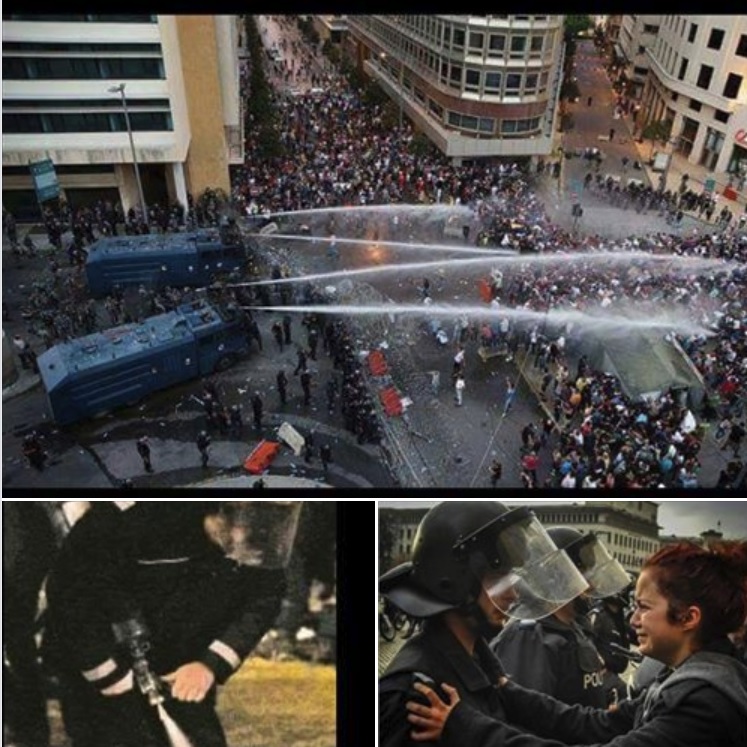
‘If it gets us really angry, it's better to check it’
Cristina Lupu, Program Director at the Independent Journalism Center (IJC) of Romania, identified several such photos on social media, allegedly related to the protests of 10 August in Bucharest, which actually referred to totally different events. The journalist highlighted three such examples. A photo with a gendarme and a protestor, allegedly his sister, actually proved to be taken in Sofia, Bulgaria. The second case concerned the photo of water cannons targeting at protesters, and the third one - the photograph of a gendarme tear-gassing a protester from a short distance. ‘If something is too good to be true, it almost never true. If some elements of the story do not fit in (buildings that we do not recognise, two water cannons, though we have heard/know that only one was there, too warm clothes for the season) it is obvious that the story is not true. If it gets us really angry, it's better to check it. It could be true, but the chances that someone is pushing our emotional buttons are just as great’, Cristina Lupu wrote on her Facebook page.
Social media panic
Lilia Zaharia, reporter of the Association of Independent Press (API) and STOP FALS online platform, commented for Media-azi.md that the technique of using images to manipulate the public opinion is used frequently to create panic among Internet users. ‘We often see that news about migrants and refugees are accompanied by pictures of people from Asia or Africa, involved in various conflicts. Such a manipulation method instills into the public mind the idea that these people are aggressive, which is a false statement’, Zaharia pointed out.
The journalist noted that often images were posted online as related to an event, but actually taken in a different period and in a different place.
She gave the example of the images shared online in relation to the last week’s protest in Bucharest. ‘I saw that Internet users shared images from Lebanon, Bulgaria or even Bucharest, but taken several years ago, without verifying them. I'm sure many of them shared these images involuntarily, unaware that the photos are not related to that specific event, location or period’, Lilia Zaharia added.
How do we verify the authenticity of photos?
Both Lilia Zaharia and Cristina Lupu mentioned that there were a lot of tools to verify the authenticity of photos. The simplest one is ‘Google Images’, a Google search service that allows users to find images in various formats - jpg, png, gif etc. How can we use it? Copy the image from the web or from your computer and place it in the search box on images.google.com. Click on the camera icon and then select ‘Upload an image’. Copy and paste the image URL. The search returns additional information about the image: its size, weight and format, as well as the date and site on which it was originally published.
‘Though this simple documentation takes a few minutes, it helps “detoxify” thousands of Internet users of false information’, Lilia Zaharia says.
Cristina Lupu recommends Internet users to read the comments as well, because there somebody might have already recognized and verified the photo. ‘If not, and you are the first to verify it, comment on it and say it is false’, Lupu recommended.
Find below other useful tools to verify the authenticity of photos:
- Tin Eye - specialized in image search and recognition. Users can upload a photo or insert a link to find its origin.
- RevEye Reverse Image Search is a similar service.
- Geolocation - another useful tool that helps identify where the photo was taken. Looking for an address on Google Maps, Google Earth, and Google Street View, we'll find topographical information and many other details. Users can try out their skills and knowledge of identifying fake photos by taking a practical test, following the link in the video description.
Photo source: Cristina Lupu (Facebook)










